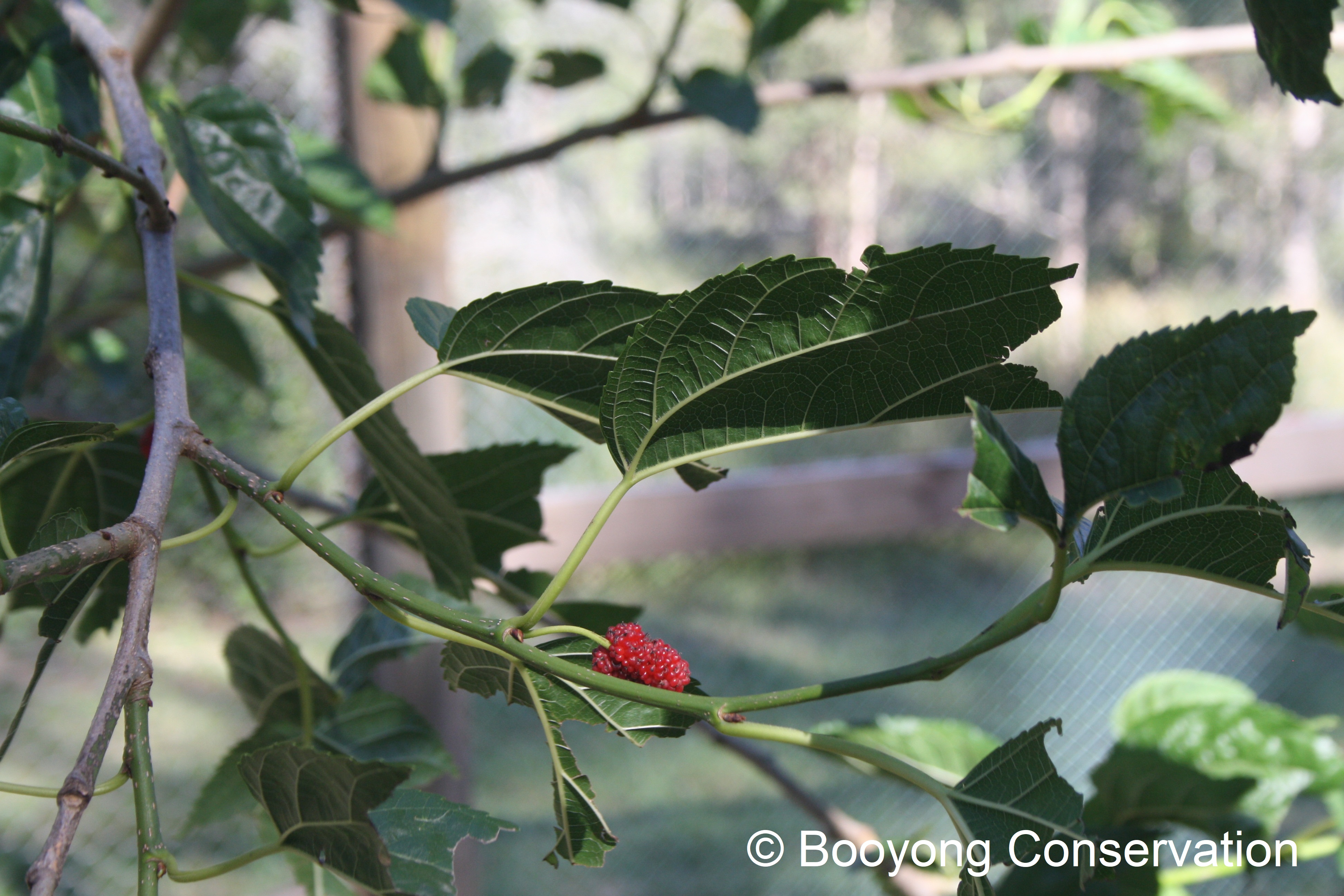One of the first things Bob did when he built the chicken pen was plant a Mulberry tree. There are white and red mulberries available, ours start red and turned a lovely dark grape colour when ripe.
Mulberry trees are deciduous, with beautiful large green leaves which provides shade in summer and lets the sun through in Winter. They grow very quickly and can live as long as 75 years, reaching a height of 20 metres. 
The chickens are certainly going to be shaded and fed over their lifetime – Wow!
Mulberries like full sun and we can support that they tolerate drought as they are still going strong after a very dry winter and previous summer. Apparently, the fruit will still produce but drop early if the conditions are too dry. The chickens provide constant fertilizer to the tree throughout the year, if you choose to add more you can do so with cow manure three times a year.
Mulberries will begin producing flowers prior to shooting new leaves in Spring and they are pollinated by wind. If the shape needs tidying up you can give it a light prune when dormant in winter, only to remove dead or overcrowded branches. Just be mindful that if you prune it too hard you will be provided with less fruit that year. Feed the tree with blood and bone, after pruning and use pruned leaves as fodder. Mulberry trees can be transplanted when young and roots are not well established.
Fruit will become ripe is stages from late spring through to summer so you can continue picking the fruit for quite a long period of time, they will not ripen once off the tree.
You may wish to nett the tree to protect it from birds as they devour them quickly. Birds will eat insects and mulberries are a good companion plant for vines.
I recall in my childhood staining my shirts picking berries, the rich red juice is amazing, but you may want to wear gloves. Don’t plant them near a sidewalk unless you don’t mind the staining or the potential tracking in of squashed berries. According to the Garden clinic you can try rubbing stained fingers with an unripe mulberry to remove the colour. We’ll certainly have to give that a go next year.
Ducks and chickens both enjoy eating mulberries. The chickens eat the fruit as it drops, and the leaves can also be fed to the chickens and goats. According to silk worms also eat mulberry leaves which is interesting.
They are quite a delicate fruit and don’t transport well, which is why you won’t find them in grocery stores. Unwashed berries will keep 3-4 days in the refrigerator. If you wish to save up enough to make something with them, you can put them into a zippered plastic bag until you have the amount you need for your recipe.
Mulberries are high in antioxidants, Vitamin C, Vitamin K, Iron, Fiber, Riboflavin Magnesium and Potassium.
I have only every eaten mulberry off the tree, as it grows and the yield increases we will try some other recipes and share them with you. Mulberries make wonderful jelly, jam, syrup, and fruit and you can apparently make mulberry and rhubarb pie or mulberry and strawberry jam.
Life is just ducky has shared a Syrup recipe that sounds divine – Add a little water in a sauce pan with the mulberries, heat until the juice cooks out of them. Pour and mash through a strainer to remove the stems. Then mix with an equal amount of maple syrup. Cook down to desired consistency. Use warm or store in the refrigerator.
The Mulberry tree can be propagated from a cutting, just dip it in rooting hormone and place it in fresh, damp potting mix.
